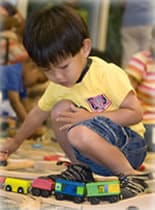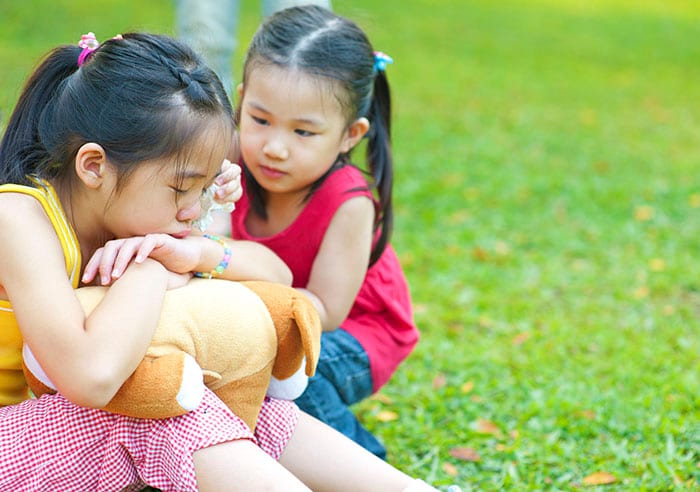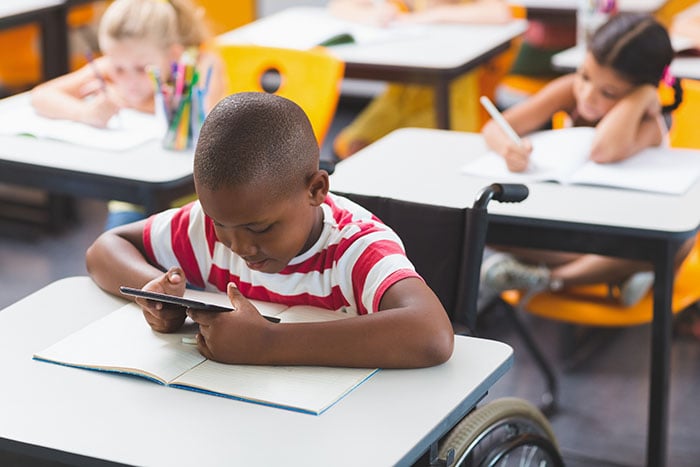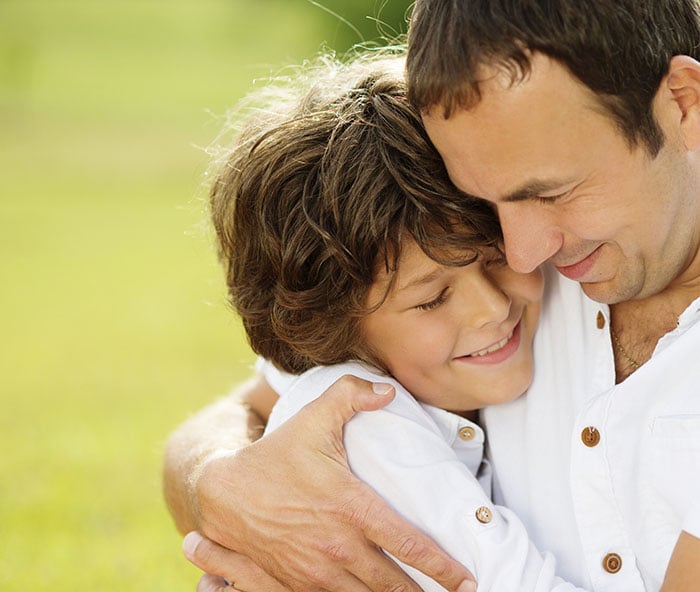Public Health Response to Bourbon Virus
- Details
- Published on Wednesday, 13 December 2017 14:11
Update: Public health response to Bourbon virus
JEFFERSON CITY, MO – The Missouri Department of Health and Senior Services (DHSS), Centers for Disease Control and Prevention (CDC), and local public health agencies recently completed a follow-up investigation of the Bourbon virus case identified during the summer of 2017.
Results of blood testing among participants are protected health information and will not be released. It is important to note, because Bourbon virus is believed to be spread by ticks, Missourians likely have one more reason to practice tick avoidance while outdoors.
Testing for Bourbon virus and Heartland virus (another cause of tick-borne illness in Missouri) was conducted on more than 7,000 ticks collected in the state park. Bourbon virus was not detected in any of the ticks collected. This does not mean the virus is not present in some ticks in the park. Instead, it means none of the ticks that might have been infected at the time of this investigation were trapped and tested. Heartland virus was detected in one group of ticks.
Patients diagnosed with Bourbon virus have shown signs similar to infection with Heartland virus and ehrlichiosis (the latter is a type of bacteria transmitted by ticks), including fever, muscle aches, fatigue, headache, anorexia, diarrhea, and rash. Like Heartland virus and ehrlichiosis, Bourbon virus can affect blood cells that help the body fight infection and prevent bleeding. There is no vaccine or specific treatment for Bourbon virus.
For members of the public worried about the possibility of tick-borne diseases, the best way to prevent infection is to avoid being bitten by a tick. Instructions on how to prevent exposure while outdoors are as follows:
- Apply insect repellents containing at least 20% DEET, picaridin, or IR3535 (no more than 30% DEET in children) to exposed skin according to label instructions.
- Apply a permethrin solution to clothing according to label instructions. This will last through several washings. Do not allow people or pets to have contact with treated surfaces until spray has dried.
- Stay on marked and paved trails.
- Wear light-colored long sleeve shirts and pants.
- Immediately perform a thorough tick inspection after being outdoors.
- If a tick is found, remove as soon as possible. Grasp the base of the head of the tick with a pair of tweezers and pull off with a straight motion, making sure to avoid twisting and jerking motions.
If a person begins developing a fever, muscle aches, fatigue, headaches, anorexia, diarrhea, or a rash after exposure to a tick bite or tick habitat, they should seek treatment from a medical professional and inform them of recent tick exposure.
For more information on ticks and the Bourbon virus investigation, please contact the Department of Health and Senior Services, Office of Veterinary Public Health at 573-526-4780 between the hours of 8 a.m. and 5 p.m. Monday through Friday.
About the Missouri Department of Health and Senior Services: The department seeks to be the leader in promoting, protecting and partnering for health. More information about DHSS can be found at health.mo.gov.
###
Caring for Children in Disasters
- Details
- Published on Monday, 11 December 2017 08:14
Children are more vulnerable than adults in emergency situations. Take steps to protect children.

How Children are Different
Disasters affect children differently than they do adults. Learn more about the unique needs of children during and after disasters.

- Children’s bodies are different from adults’ bodies.
- They are more likely to get sick or severely injured.
- They breathe in more air per pound of body weight than adults do.
- They have thinner skin, and more of it per pound of body weight (higher surface-to-mass ratio).
- Fluid loss (e.g. dehydration, blood loss) can have a bigger effect on children because they have less fluid in their bodies.
- They are more likely to lose too much body heat.
- They spend more time outside and on the ground. They also put their hands in their mouths more often than adults do.
- They are more likely to get sick or severely injured.
- Children need help from adults in an emergency.
- They don’t fully understand how to keep themselves safe.
- Older children and adolescents may take their cues from others.
- Young children may freeze, cry, or scream.
- They may not be able to explain what hurts or bothers them.
- They are more likely to get the care they need when they have parents or other caregivers around.
- Laws require an adult to make medical decisions for a child.
- There is limited information on the ways some illnesses and medicines affect children. Sometimes adults will have to make decisions with the information they have.
- They don’t fully understand how to keep themselves safe.
- Mental stress from a disaster can be harder on children.
- They feel less of a sense of control.
- They understand less about the situation.
- They have fewer experiences bouncing back from hard situations.
Helping Children Cope with Emergencies
Regardless of your child’s age, he or she may feel upset or have other strong emotions after an emergency. Some children react right away, while others may show signs of difficulty much later. How children react or common signs of distress can vary according to age. Knowing how to help children cope after an emergency can help them stay healthy in future emergencies.

Children Face Unique Risks in an Emergency
Children are vulnerable in an emergency because they may not be able to communicate important information clearly. A child’s ability to communicate who they are and who their parents are depends on the child’s age and development level. Children with intellectual or developmental disabilities or long-standing health problems may need special support services, including medicine and medical equipment, which typically are not available in traditional shelters. In addition, children requiring medical services are not legally able to provide consent for treatment.
Children also face heightened risks in an emergency because of the following:
- Developmental risks: Disruption to children’s schooling, housing, friendships, health care, and family networks can affect children’s ability to advance emotionally, socially, and academically.
- Protection risks: Without adequate adult support and guidance, children may not receive the care, protection, shelter, and transportation they require when an emergency strikes. Children, separated from their parents or trusted adults, may be especially vulnerable to mistreatment. Rapid family reunification minimizes these risks to children.
- Physical needs: Infants and young children in emergency shelters have different nutritional needs than adults and require age-appropriate supplies, such as baby formula, diapers, clothes, and a safe sleeping surface (for example, a crib or baby box).
- Medical needs: Treating children requires specialized training, equipment, and medicines, and children are physically more susceptible to chemical, biological, and nuclear threats.
Factors that Influence the Emotional Impact on Children in Emergencies
The emotional impact of an emergency on a child depends on a child’s characteristics and experiences, the social and economic circumstances of the family and community, and the available resources in the surrounding environment. The following specific factors may affect a child’s emotional response:
- Direct exposure to the emergency
- Previous exposure to trauma
- Belief that the child or a loved one may die
- Separation from caregivers
- Physical injury
- How parents and caregivers respond
- Inner resources of the family and the relation and communication patterns among family members
- Repeated exposure to mass media coverage of the emergency and aftermath
- Cultural differences
- Community resilience
Additional Resources
Emergency Preparedness and You
Real Stories- Reunification Plans
More Information on Helping Children Cope
Before, During and After an Emergency
Regardless of your child’s age, he or she may feel upset or have other strong emotions after an emergency. Some children react right away, while others may show signs of difficulty much later. How children react or common signs of distress can vary according to age. Knowing how to help children cope after an emergency can help them stay healthy in future emergencies.
An emergency can happen anywhere and at any time. It is important for parents to know what steps they can take before, during, and after an emergency to protect their family. Parents ensure that family members are ready and know what to do when emergencies happen.
Before an Emergency
A little preparation now can make a big difference later.
Here are some steps you can take to help keep your family safe and healthy when an emergency happens:
- Prepare an emergency kit that includes a 3-day supply of necessities for each person in your family, such as food, medicine, water, games, flashlight, and special toys to help keep your children calm during an emergency.
- Make a plan to contact family members, especially if you are not together when an emergency strikes. If your children are old enough, teach them how to call 911 and memorize important phone numbers. Create a reunification plan as part of the family communication plan to reunite you with your loved ones as soon as it is safe to do so.
- Review with your children the different types of emergencies that can happen in your area and the warning signs for those emergencies. For example, if tornadoes are common, your children should know what to do during a tornado. This includes knowing the signs of an approaching storm and instructions on how to take shelter during a tornado.
Be informed, stay informed, and get vital information, such as emergency warnings and alerts, from reliable news sources and your local emergency management agency.
Getting your children to help with preparing for an emergency can teach them the basics of staying safe and will make emergencies less stressful because they will be prepared and empowered. Ask them what items they think should go in an emergency kit and plan. CDC’s Ready Wrigley’s checklists for children can help them identify supplies for an emergency kit, including items for pets, and develop a family communication plan. Use the Ready Wrigley activity books to help your children understand how they can stay safe in different types of emergencies that can happen in your community.

Help protect your child during the school day.
In the United States, about 69 million children are separated from their parents or caregivers every work day to attend school or child care. You can help protect your children, even when you are not with them, through the following steps:
- Find out the school or childcare center’s emergency plans. Every school and childcare center should have a written emergency plan with information, such as how to contact parents in an emergency and where children will go if evacuated. Also, ask how you can contact the school or childcare center during an emergency and how parents and caregivers will reunite with their children.
- Update your emergency contact information. Make sure that the school has up-to-date emergency contact information for your child. Notify the school every time your address or phone number changes. Keeping a backpack emergency card with your child is one way to make sure that emergency contact information – as well as other important information like medications and allergies – is handy.
During an Emergency
Different emergencies may require different actions. Protect your family by knowing what to do.
Each emergency is different and may require different actions to keep you and your family safe. Local authorities will share safety instructions and updates on television, radio, the Internet, or social media pages, like Twitter and Facebook. Depending on the emergency, authorities may ask you to stay where you are (“shelter in place”), or they may recommend that you go somewhere else (“evacuate”).
If you have children in a school in the exposed area, school authorities may evacuate your children to a safer place or emergency shelter. In these cases, do not go to your children during the emergency. This can put you and your children at greater risk. Wait until emergency or school authorities say it is safe for you to pick up your children.
Learn more about what you can do in different emergencies:
Additional Resources
Stay Tuned to Learn How to Evacuate
Stay Put – Learn How to Shelter in Place
After an Emergency
Recovery can take time. Get the support you need to help you and your child in the aftermath of an emergency.

Reuniting After an Emergency
Children may be away from their parents – or accidentally separated– during an emergency. Having a reunification plan and knowing reunification resources can help you reunite with your loved ones as soon as it is safe to do so.
Helping Children Cope
Regardless of your child’s age, he or she may feel upset or have other strong emotions after an emergency. Some children react right away, while others may show signs of difficulty much later. How children react or common signs of distress can vary according to age. Knowing how to help children cope after an emergency can help them stay healthy in future emergencies.
Additional Resources
Emergency Preparedness and You
Real Stories- Reunification Plans
How do I find my family? Resources
More resources are available on the CDC website here.
Holiday Safety Tips
- Details
- Published on Tuesday, 05 December 2017 11:15
Safety Never Takes a Holiday

Poisonings never take a break, even during the holidays. Missouri Poison Center is always ready to help, every day of the year. One of the best pieces of advice we give is to program the poison help phone number into your mobile phone: 1-800-222-1222. Being prepared and calling right away is your best bet – you’ll be speaking with a poison specialist within seconds to get the help you need!
FOOD SAFETY
Food safety guidelines are very important to know and follow. Appetizers set out early should be put away before the meal is served. When serving a holiday buffet, keep cold food cold, and hot food hot. Meat should be cooked to the appropriate temperature based on the cut and type. After the meal, food should be put in containers and stored in the refrigerator to avoid bacterial growth. Check out foodsafety.gov for useful information, there is even an app to help keep this information right at your fingertips: https://www.foodsafety.gov/keep/index.html.
WINTER PLANTS
Traditional holiday plants such as mistletoe, poinsettias, and amaryllis bring a bit of the outdoors inside during the cold, winter months. The plants and berries are beautiful, but might look like food to young children. In general, each of these plants can cause symptoms such as vomiting and diarrhea if eaten in large enough amounts. Keep all plants out of reach and don’t forget the pets! If there has been an ingestion of any winter plant, why wonder or worry? Call the poison center right away for answers. For more information, check out our post about winter plant safety.
HOLIDAY SAFETY FOR SMALL CHILDREN
Holiday parties are an adventure for a toddler and their curiosity meter goes into overdrive with so many new things to see, taste, and touch. We suggest checking out this new environment at your child’s eye level to identify possible poison hazards.
- Ice melt products can be inadvertently brought into the home from the bottom of shoes. Of course, a toddler will not only find it, but will put it right into their mouths. Keep the bags and buckets of ice melt out of sight and reach of children because their salt content can be a problem if ingested in large enough amounts.
- Look around the Christmas tree area, needles from the tree are likely to be on the floor, and there is usually a stray piece of tinsel or an ornament to be found. These items can be a choking hazard if placed in the mouth.
- Don’t forget about the scented plug-ins placed in outlets right at kid level. These can cause irritation to the mouth and upset stomach if swallowed.
- Hand bags and purses are frequently set down on the floor and not watched closely. For a toddler, a purse is a treasure waiting to be explored. Cosmetic products are not likely to cause symptoms, but medications can be serious, so be sure to keep hand bags and purses up and away.
- Don’t forget about the alcoholic beverages sitting out on the table, a child may come by and drink from the wrong cup. Depending on the amount and strength of the beverage, an intoxication can occur. If a child drinks an alcoholic beverage, call Missouri Poison Center right away!
TOYS AND GIFTS
Gifts are a kid’s favorite part of the holiday party. Once they have been opened, there’s wrapping paper and bows thrown all about and the kids start trying out their new toys. Keep in mind, anything small enough to fit in a baby’s mouth will go in their mouth and can be a choking hazard.
Science kits and art supplies are intended for older children to use under adult supervision. Commonly, there are small pieces present, along with brightly colored paints and chemicals. If possible, save the box or package insert to make identification easier if an exposure occurs.
Disc or button batteries come with many toys and other objects that make sound or light up. If swallowed, the batteries can lead to serious symptoms, no matter the age of the child. Any device that comes with a button battery should have a compartment that is secured with screws. Make sure the screws are securely tightened to keep little ones from getting into the battery. Even if you SUSPECT someone has swallowed a battery, call the poison center immediately for individual recommendations. When it comes to button batteries, you do not want to wait or take any chances.
Rare earth magnets are typically given as a gift to an adult to keep on their desk as a creative outlet and stress reliever. If a child swallows more than one unattached magnet, they can attract to each other in the intestines and cause damage. One surgeon described the damage as being similar to a bullet wound, without the entry and exit points. The best advice is to keep these magnets away from children of any age. They should never be allowed to play with them.
CHANGE IN ROUTINE
Holidays bring a change in our normal routine, but child safety precautions remain the same. Guests, such as grandparents, may be spending the night in your home. Be sure they keep all toiletries and medications up and out of sight of little ones. If the kids are staying over at the grandparent’s house, make the necessary safety changes before the kids come over.
Medication errors are common due to changes in your usual sleep and wake up times. If you have accidentally double-dosed or skipped a dose of your medication, call the poison center, we are there to help get you back on track safely.
If you have questions about holiday safety, call the Poison Help line at 1-800-222-1222. Specially trained nurses and pharmacists are available 24/7/365. The service is free and confidential.
Milestone Tracker Mobile App
- Details
- Published on Monday, 27 November 2017 15:04
Milestones matter! Track your child’s milestones from age 2 months to 5 years with CDC’s easy-to-use illustrated checklists; get tips from CDC for encouraging your child’s development; and find out what to do if you are ever concerned about how your child is developing.
From birth to age 5, your child should reach milestones in how he or she plays, learns, speaks, acts, and moves. Photos and videos in this app illustrate each milestone and make tracking them for your child easy and fun!
Features:
- Add a Child – enter personalized information about your child or multiple children
- Milestone Tracker – track your child’s developmental progress by looking for important milestones using an interactive, illustrated checklist
- Milestone Photos and Videos – know what each milestone looks like so that you can better identify them in your own child
- Tips and Activities – support your child’s development at every age
- When to Act Early – know when it’s time to “act early” and talk with your child’s doctor about developmental concerns
- Appointments – keep track of your child’s doctors’ appointments and get reminders about recommended developmental screenings
- Milestone Summary – get a summary of your child’s milestones to view, and share with or email to your child’s doctor and other important care providers
The use of this app is not a substitute for the use of validated, standardized developmental screening tools as recommended by the American Academy of Pediatrics.
CDC does not collect or share any personal information that can be used to identify you or your child.
Download the Milestone Tracker app from the App Store or Google Play today!



